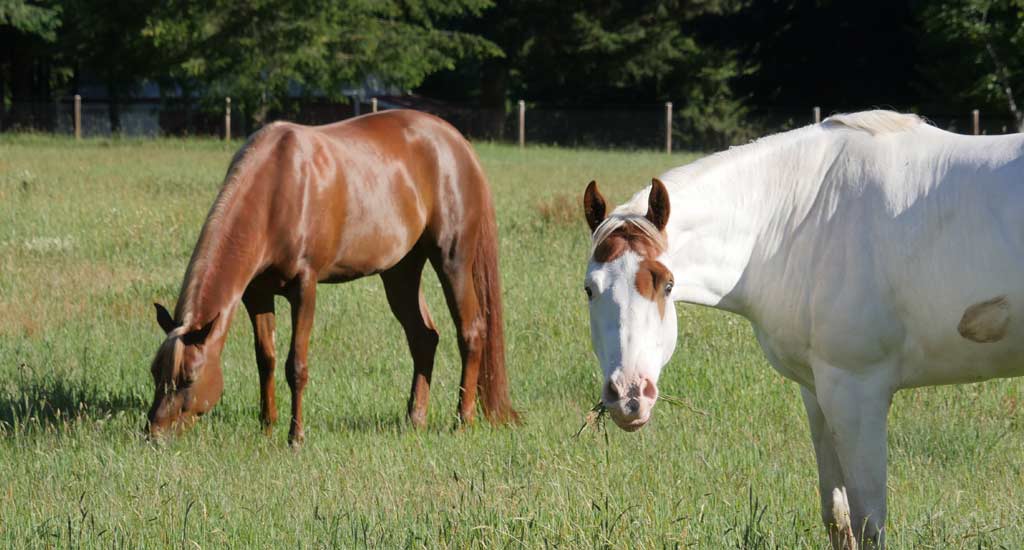Keeping Vet Costs at Bay
My daughter heard our vet comment to his new assistant on dental day, “Yeah, we only come to this barn once a year.” He’s pretty correct. I pulled our ONE vet file, which started in 1992, which includes all bills for all horses, and took a peak. The bills are for sheath cleanings, vaccines, diagnosis of sustained injuries, and putting old horses down.
From 1992 on, the two of us have had about 20 horses plus a few boarders. Several of the horses were rescues made sound and repurposed for their next adventures with new owners. Others were old school masters I took in for my personal use that needed TLC. Besides good management practices, microcurrent therapy (MCT) keeps vet bills at bay.
My daughter’s 16-hand, conformationally challenged, do-everything Paint gave us plenty to work on. Acquired as a four year old, his extensive mileage includes showing in pleasure, dressage, and eventing. They also love trail riding, and our canyon is no picnic to navigate. The injuries he has sustained over the years include a check ligament injury, stifle injury, splints, sore back, tweaked neck, annular ligament strains, and sore hocks. When the farrier screws up his angles, balance, or foot size, he gets sore feet and ringbone. But at 25 now, his legs look great, he has only a little arthritis, and he is sound for short hacks.
With other horses, there were hoof abscesses, dual hind leg suspensory ligament failure, annular ligament syndrome (windpuffs), puncture wounds, eye injuries, bowed tendons, laminitis, nerve damage, and minor fractures. With the help of microcurrent, I’ve also dealt with colic and stopped the onset of Pigeon Fever.
My hobby of fixing horses with MCT evolved into a business of helping others get this equipment and learn how to use it. After 7 years of exclusive MCT and bodywork; my repertoire has expanded for expediency by tailoring other complimentary therapies to reduce downtime even further.
Ashley Powers’ Success with Microcurrent
Ashley Powers has been using microcurrent therapy in her barn since 2007. She has seen the same benefit in maintaining the soundness of her performance horses and reducing vet visits.
“I run a boarding facility, and the only time that vets visit our barn is to treat boarder’s horses. It doesn’t take the boarders long to get on board with our alternative therapy approach when they notice this trend! I have treated numerous ailments with microcurrent, including arthritic hocks, stifle injuries, SI Joint problems, and, most recently, a horse with a hoof abscess. He was fine one day and dead lame the next. I started soaking his hoof in a soaker boot with the MCT wires dropped into the water to treat the hoof with microcurrent. Within a couple of days, the horse was sound, and the abscess opened up and drained. That is what I love most about MCT; it works consistently and every time! You can follow my various therapy treatments and case studies in Ashley’s Corner.”
Treat & Locate at the Same Time
The dual-purpose Matrix Best-Vet III biofeedback microcurrent device lets you track soreness and treat it at the same time. Let’s say you’re wondering if the soreness is coming from the back. You scan away and get to the hips, and suddenly the tissue starts spasming. You’ve just located bound-up tissue and are automatically releasing it. The Matrix BVIII does not forcibly cause contractions like other devices. It finds abnormal tissue and helps to restore proper cellular balance.
Beyond locating and treating specific places, the goal is then to create whole-body connectedness by incorporating full-body treatments with the core and legs all talking to each other in various protocol setups. The favorite accessories for the Matrix BVIII are the comb for accessing, back pad, leg wraps, and roller. General protocols for microcurrent and our other complementary therapies can be found in the book, “MicroCurrent for Horses and Other Vital Therapies You Should Know.”
Variation of this article Published in April 2017 West Coast Horsemen and Horse News of NJ

